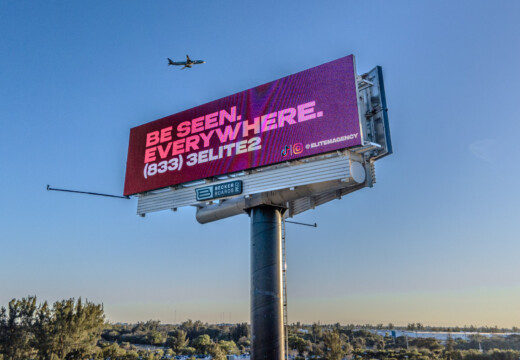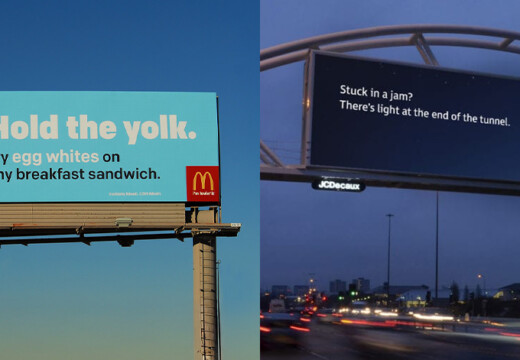Billboard advertising for age-restricted products like alcohol, tobacco, and vaping comes with strict rules to protect public interest and avoid penalties. Here’s what you need to know:
- Federal Rules: Tobacco billboards are banned. E-cigarettes require addiction warnings. Alcohol ads must avoid youth appeal and include “Please Drink Responsibly.”
- State and Local Laws: States and cities may add rules like distance from schools or limits on ad density.
- Content Guidelines: Ads can’t appeal to minors (e.g., no cartoons) and must include required warnings (e.g., nicotine advisory for vaping).
- Placement Rules: Ads should target adults, with locations and display times ensuring most viewers are 21+.
- Compliance: Keep detailed records of ad content, location, and audience data for at least three years to meet legal standards.
Following these guidelines ensures your campaign is effective and compliant.
ASA Report: Children’s exposure to age-restricted TV ads continues to decline
Federal Advertising Laws
Federal regulations play a key role in protecting public health and limiting youth exposure to certain types of advertising. Advertisers must adhere to specific guidelines within this framework.
Government Oversight
Three major federal agencies are responsible for regulating billboard advertising for age-restricted products:
- Food and Drug Administration (FDA): Enforces advertising restrictions on tobacco and e-cigarettes.
- Federal Trade Commission (FTC): Monitors ads for deceptive practices and unfair competition.
- Alcohol and Tobacco Tax and Trade Bureau (TTB): Ensures compliance with alcohol advertising rules.
The FDA has the authority to issue warning letters and levy fines of up to $19,192 per violation. Each agency plays a distinct role, and federal rules differ depending on the product being advertised.
Current Federal Rules
The 1998 Master Settlement Agreement (MSA) banned traditional tobacco billboard advertising across the U.S.. Federal requirements now vary by product type, as shown below:
| Product Type | Key Federal Requirements | Required Warnings |
|---|---|---|
| Tobacco | Complete billboard ban | N/A – Billboard advertising not permitted |
| E-cigarettes | Must include addiction warnings | “WARNING: This product contains nicotine. Nicotine is an addictive chemical.” |
| Alcohol | Must avoid youth appeal and health claims | “Please Drink Responsibly” (industry standard) |
For alcohol ads, federal guidelines require that all individuals depicted must clearly appear to be over 21. Additionally, the TTB prohibits any claims suggesting health benefits or promoting excessive drinking. To further reduce youth exposure, age-restricted ads should only be displayed between 6:00 a.m. and 11:00 p.m..
Advertisers are also required to maintain detailed compliance records for at least three years. These records should include information about ad placement, audience demographics, ad content, and any complaints received. Non-compliance can lead to hefty fines and may result in a requirement for pre-approval of future campaigns.
Next, we’ll examine how federal regulations align with state and local advertising laws.
State and Local Rules
Once you’ve grasped the federal requirements, it’s time to dive into how state and local regulations add another layer of complexity to compliance. These additional rules ensure that billboard ads for age-restricted products align with the values and standards of individual communities. Navigating this patchwork of regulations means advertisers must juggle multiple levels of compliance.
Location Requirements
Local governments often enforce strict rules about where age-restricted billboard ads can appear. For instance, many ordinances require these ads to be placed a certain distance away from sensitive areas like schools, parks, places of worship, or residential neighborhoods. To avoid penalties, advertisers need to verify these distance rules with local planning boards or zoning offices.
State-Specific Laws
Some states go beyond federal mandates by introducing their own regulations. These might include limits on how many age-restricted ads can appear in a given area, requirements to include public health or safety messages, or specific design and content standards. For example, certain states enforce unique rules about ad density or mandate disclaimers for public awareness. Advertisers should carefully review the laws in every state where they plan to advertise to ensure they’re meeting all the necessary criteria.
State laws provide a broad framework, but local rules often dictate the finer details.
Local Guidelines
Cities and counties add their own spin to compliance through zoning laws and design standards. These might include restrictions on when ads can be displayed, technical specifications for digital billboards, or additional permits and review processes for age-restricted content. To stay on the right side of the law, advertisers should thoroughly research these local requirements and work closely with municipal authorities to address any specific concerns.
Content Rules
When it comes to age-restricted billboard advertising, the content itself must meet strict guidelines to ensure compliance with legal and ethical standards.
Banned Content
Age-restricted advertisements must steer clear of anything that could appeal to minors or violate federal regulations. This means no cartoon characters, animated figures, or imagery that might attract younger audiences. For alcohol ads, content cannot imply that drinking leads to social or sexual success, nor can it glamorize excessive consumption.
Cannabis advertising comes with its own set of rules, prohibiting:
- Depictions of product consumption
- Misleading or exaggerated claims
- Encouragement of illegal activities
- Distribution of promotional handbills in public spaces
Required Elements
Every age-restricted billboard must include specific disclaimers and warnings tailored to the product being advertised. For instance, alcohol ads are required to feature the phrase “Please Drink Responsibly”. Additionally, many states mandate other elements, such as:
| Product Type | Required Elements |
|---|---|
| Alcohol | – Disclosure of alcohol content – Health warning statements – Legal drinking age reminder |
| Cannabis | – State-required warning text – THC content details – Age restriction notice |
| E-cigarettes | – Health risk warnings – Nicotine advisory – Age verification notice |
These elements ensure compliance while balancing legal requirements with creative execution.
Design Standards
Billboard designs must meet specific criteria to target an adult audience effectively. For example, models featured in the ads must unmistakably represent adults, and billboards should be placed in locations where at least 71.6% of the audience is aged 21 or older.
Other important design considerations include:
- Using visuals that clearly appeal to adults
- Avoiding bright colors or playful designs that might attract children
- Ensuring text is easy to read from typical viewing distances
sbb-itb-2e2e93f
Billboard Planning
When advertising age-restricted products on billboards, careful planning is essential. Choosing the right locations and monitoring performance are key to ensuring both campaign success and adherence to regulations.
Location Selection
Choosing the right billboard location starts with verifying that the audience and surroundings align with age-restricted advertising rules. A detailed site evaluation is necessary to confirm compliance with local, state, and federal guidelines.
Here are some critical factors to consider:
| Consideration | Requirement | Verification Method |
|---|---|---|
| Audience Demographics | Ensure the majority of the audience is 21 or older | Conduct demographic analysis |
| Proximity to Sensitive Areas | Maintain safe distances from schools and playgrounds | Use physical surveys or maps |
| Sensitive Locations | Avoid areas with high youth traffic | Employ geographical mapping |
| Traffic Patterns | Focus on areas with high adult traffic | Review traffic studies |
Once you’ve identified suitable locations, adjust the timing of your billboard displays to align with periods when adults are most likely to see them.
Digital Display Times
After securing compliant locations, timing becomes crucial. Digital billboards allow for precise control over display schedules, making it easier to target adult audiences while limiting exposure to minors. Effective time slots to consider include:
- Morning and evening commutes: 6:00 AM – 9:00 AM and 4:00 PM – 7:00 PM
- Late-night hours: After 9:00 PM
- Business districts: During standard work hours
- Entertainment areas: During events aimed at adults
Platforms like Blip simplify scheduling with automated tools that ensure ads are displayed at the right times, across multiple locations, while staying within regulatory boundaries.
Performance Tracking
Digital billboards also make it easier to measure how well your campaign is performing while ensuring compliance with advertising rules. To stay on track, monitor these key metrics:
- Audience Analysis: Regularly check demographic data to confirm that the majority of the audience is adults.
- Impression Tracking: Measure how many people view your ads to ensure they align with age-related guidelines.
- Location Performance: Compare results across different sites to refine future campaigns.
- Compliance Documentation: Maintain detailed records of audience data and performance metrics for regulatory audits.
Consistently reviewing performance data helps you optimize your campaign while staying fully compliant with age-restricted advertising requirements.
Compliance Steps
Ensuring compliance is a critical part of any advertising campaign. By adhering to structured processes, advertisers can meet legal standards and avoid potential complications.
Ad Review Process
Every billboard ad goes through a thorough review process to ensure it meets all necessary guidelines:
| Review Stage | Key Requirements | Timeline |
|---|---|---|
| Internal Review | Content guidelines, age verification | 1–2 business days |
| Legal Assessment | Federal and state compliance | 2–3 business days |
| Platform Review | Technical specifications, display rules | 90 minutes |
| Billboard Owner Approval | Location-specific requirements | 1–3 business days |
This structured approach ensures ads are compliant and ready for display while keeping records organized for quick reference.
Record Keeping
Keeping detailed and accurate records is essential for smooth operations and audit readiness. Key documents to maintain include:
- Monthly adult audience reports
- Display schedule logs
- Content approval records
- Compliance certificates
- Performance metrics and viewer data
Organized documentation not only supports compliance but also simplifies responses to regulatory inquiries.
Regulatory Response
When regulatory questions arise, a quick and efficient response is crucial. A well-prepared compliance team and robust documentation system can make all the difference.
- Initial Response Protocol: Ensure the compliance team is ready to respond within 24 hours and maintain an organized documentation system to provide needed information promptly.
- Audit Preparation: Keep digital records of essential items, such as:
- Original artwork and ad content
- Placement verification photos
- Audience measurement data
- Correspondence with regulatory bodies
- Corrective Action Plan: Be ready to act swiftly if issues arise by implementing the following:
- The ability to immediately suspend ads
- Protocols for modifying content
- Documentation of all changes made
- Pre-prepared communication templates for stakeholders
Summary
Key Rules
A successful campaign does more than just follow the law – it builds trust with the audience. Following age-restriction rules is a must for any compliant strategy.
| Requirement Category | Key Components | Verification Method |
|---|---|---|
| Location Standards | Select venues that comply with regulations and focus on adult audiences | Use geographic and demographic analysis tools |
| Content Guidelines | Tailor ad messaging to adult audiences while meeting legal standards | Employ automated content review systems |
| Documentation | Maintain detailed records of placements and performance | Utilize digital tracking and reporting platforms |
These principles are the backbone of effective campaigns. For instance, during Q3 2024, Hashtag-Vape‘s campaign in Austin, TX saw a 40% boost in brand awareness by strategically targeting adult consumers.
Available Resources
Advertisers can streamline compliance and campaign management using advanced digital tools. Platforms like Blip offer a range of features, including:
- Real-time performance tracking
- Automated content review systems
- Access to location-specific demographic data
- Tools for on-the-fly campaign adjustments
“Billboards are one of the most impactful ways to advertise, and with Blip, you spend a fraction of what you would end up paying elsewhere.”
– Ray Bowens, Founder, Hashtag-Vape
“It’s not a social media thing that you see on your phone. It’s not word-of-mouth. It’s big and bold and out there in public. I would say this is the first step of looking big and public.”
– Chris Leslie, Founder, Leslie Lightcraft Co
FAQs
What happens if you don’t follow federal and local regulations for billboard ads featuring age-restricted products?
Failure to follow federal and local regulations when advertising age-restricted products like alcohol or tobacco can result in serious repercussions. These might involve steep fines, legal battles, or even having your ad taken down. Beyond the financial and legal risks, ignoring these rules can harm your brand’s reputation and weaken trust with both your audience and regulatory agencies.
To steer clear of these pitfalls, it’s essential to fully understand and adhere to all relevant advertising laws, including rules about where and how your ads can appear. Staying up to date and compliant not only keeps your campaigns running without a hitch but also safeguards your business from unnecessary penalties.
What steps can advertisers take to ensure age-restricted billboard ads, like those for alcohol or tobacco, don’t unintentionally target minors?
To ensure billboard ads for age-restricted products meet regulations and steer clear of appealing to minors, advertisers should stick to a few important practices.
First, make sure the content and visuals are tailored for an adult audience. Avoid using themes, imagery, or characters that might catch the eye of younger viewers. Second, choose ad locations wisely. Focus on areas where adults make up most of the audience, like near venues that are strictly for those 21 and older. Third, follow all local and federal laws related to advertising products like alcohol or tobacco. This includes abiding by rules about keeping ads a safe distance from schools or playgrounds.
By following these practices, advertisers can promote their products responsibly while respecting regulations and shielding younger audiences.
How can advertisers ensure their billboard ads with age-restricted content comply with federal and local regulations?
When designing billboard ads for age-restricted products like alcohol or tobacco, advertisers need to follow a few important steps to stay within the law. Start by familiarizing yourself with federal laws that regulate these types of ads. For instance, there are often rules about avoiding placement near schools or creating content that could appeal to underage audiences. Then, dig into the local regulations for the area where your billboard will appear. These might include zoning restrictions or limits on when the ads can be displayed.
Before launching your campaign, double-check that your billboard’s location and timing meet all legal requirements. Platforms like Blip can simplify this process by providing tools to choose ad locations and schedules while ensuring compliance with relevant laws. Staying within the rules not only protects your business but also supports responsible advertising practices.
Related posts
- Prohibited Billboard Content Explained
- Copyright Rules for Digital Billboard Ads
- Common Billboard Ad Violations and Fixes
Failure to follow federal and local regulations when advertising age-restricted products like alcohol or tobacco can result in serious repercussions. These might involve steep fines, legal battles, or even having your ad taken down. Beyond the financial and legal risks, ignoring these rules can harm your brand’s reputation and weaken trust with both your audience and regulatory agencies.
To steer clear of these pitfalls, it’s essential to fully understand and adhere to all relevant advertising laws, including rules about where and how your ads can appear. Staying up to date and compliant not only keeps your campaigns running without a hitch but also safeguards your business from unnecessary penalties.
"}},{"@type":"Question","name":"What steps can advertisers take to ensure age-restricted billboard ads, like those for alcohol or tobacco, don’t unintentionally target minors?","acceptedAnswer":{"@type":"Answer","text":"
To ensure billboard ads for age-restricted products meet regulations and steer clear of appealing to minors, advertisers should stick to a few important practices.
First, make sure the content and visuals are tailored for an adult audience. Avoid using themes, imagery, or characters that might catch the eye of younger viewers. Second, choose ad locations wisely. Focus on areas where adults make up most of the audience, like near venues that are strictly for those 21 and older. Third, follow all local and federal laws related to advertising products like alcohol or tobacco. This includes abiding by rules about keeping ads a safe distance from schools or playgrounds.
By following these practices, advertisers can promote their products responsibly while respecting regulations and shielding younger audiences.
"}},{"@type":"Question","name":"How can advertisers ensure their billboard ads with age-restricted content comply with federal and local regulations?","acceptedAnswer":{"@type":"Answer","text":"
When designing billboard ads for age-restricted products like alcohol or tobacco, advertisers need to follow a few important steps to stay within the law. Start by familiarizing yourself with federal laws that regulate these types of ads. For instance, there are often rules about avoiding placement near schools or creating content that could appeal to underage audiences. Then, dig into the local regulations for the area where your billboard will appear. These might include zoning restrictions or limits on when the ads can be displayed.
Before launching your campaign, double-check that your billboard's location and timing meet all legal requirements. Platforms like Blip can simplify this process by providing tools to choose ad locations and schedules while ensuring compliance with relevant laws. Staying within the rules not only protects your business but also supports responsible advertising practices.
"}}]}


